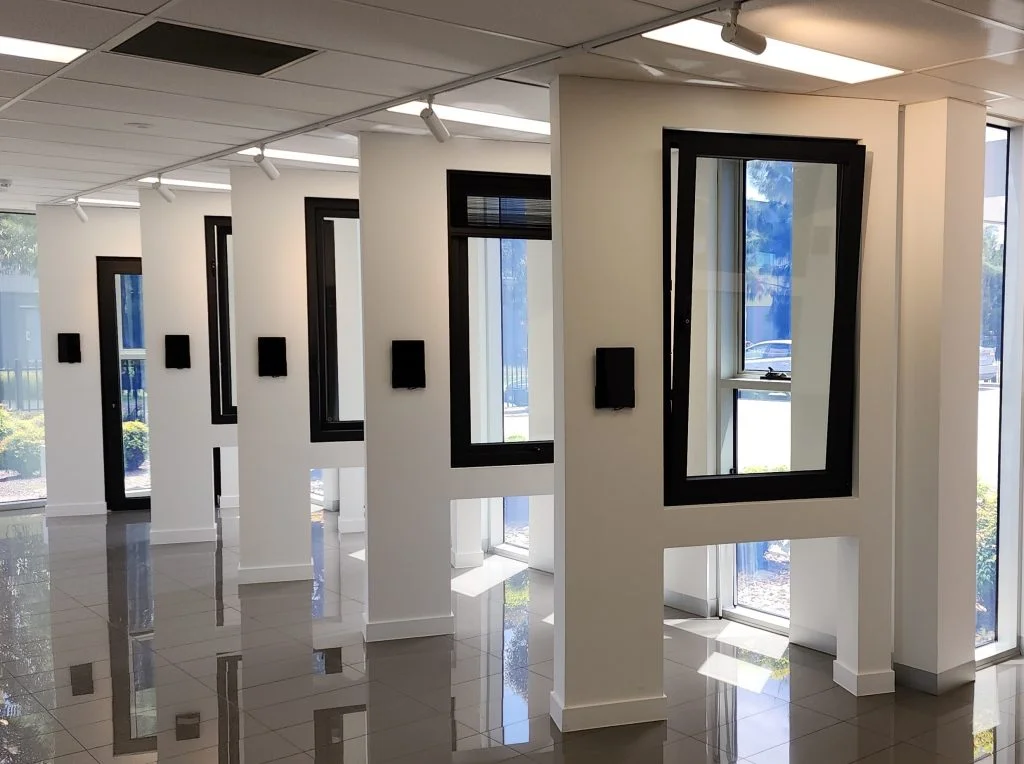-
Australia
Copyright © 2025 Powered by BCI Media Group Pty Ltd
Confirm Submission
Are you sure want to adding all Products to your Library?
Contact Detail

Long associated with stylish European homes, uPVC tilt & turn windows are becoming more popular in Australia, particularly for architects, builders and owners who are designing and constructing with sustainability in mind.
Not only are tilt & turn windows stylish and versatile; when manufactured with uPVC profiles like Thermotek’s, they also help meet passive design principles.
What exactly is a ‘tilt & turn’ window?
Tilt & turn windows are a type of window design characterised by their unique functionality, allowing for versatile ventilation and ease of cleaning.
The tilt function of these windows enables them to be opened inward from the top, typically at a slight angle. The windows also feature a turning mechanism that allows the entire sash to swing inward when opened fully. This provides easy access to the exterior of the window for cleaning purposes or emergency exits. Opening the window fully allows occupants to enjoy maximum ventilation and unobstructed views.
When manufactured with uPVC profiles, tilt & turn windows can help fulfil the tenets of passive design. Let’s take a look at exactly what passive design is and the top 5 ways that Thermotek tilt & turn windows can help meet the principles.
Thermotek windows and doors are engineered in Germany and manufactured locally in Australia, crafted for outstanding thermal performance and energy efficiency. We use world-class Aluplast uPVC in our window profiles.
First off, what is uPVC and why is it a sustainable material?
uPVC windows are notable for their thermal insulation properties, air tightness, and ability to control solar heat gain. This makes them a valuable construction material in creating thermally efficient indoor environments.
By integrating uPVC windows with other passive design elements, such as proper orientation, insulation, and natural ventilation, buildings can achieve enhanced energy efficiency and comfort for inhabitants, without relying heavily on electrical systems.
What exactly is uPVC comprised of?
uPVC is ‘Unplasticised’ polyvinyl chloride. No chemical plasticisers are used to make it. Instead, uPVC consists of strong, tough impact modifiers and fillers.
It is strong and versatile as a construction material, with long, spaghetti-like polymers that twist around each other during manufacturing to make the material more robust. Impact modifiers are then added to bind the strands together well.
uPVC also gets stronger when recycled. In fact, uPVC is up to 6% stronger when it’s recycled the first time. The next four or five times it’s recycled, it will still get stronger but by a gradually decreasing amount.
This means that anything made from uPVC – such as the window and door frames manufactured by Thermotek – is extra tough and a perfect material for passive house design.
What are the core tenets of passive design?
Passive Houses were developed in Germany in the 1990s and have been adopted internationally as a gold standard of sustainable design.
The penultimate goal of passive design is to reduce the energy consumption of a building to almost nothing and provide a comfortable living environment, year-round.
Certified Passive Houses take a ‘fabric first’ approach, allowing the building envelope and materials such as window profiles to do the work and create energy efficiency.
Fundamental functionalities of a Passive House are outstanding insulation and airtightness, which help to keep the heat inside during winter and out during summer.
A passive building is also designed to be airtight to prevent drafts and leaks, which can be a major source of energy waste. It minimises thermal bridges and ventilation systems can also be used to bring fresh air into the building and to remove moisture. That’s where tilt & turn windows come in.
Here are the top 5 ways that uPVC tilt & turn windows help achieve passive design.
1. Firstly, uPVC window profiles promote energy efficiency
An important benefit of uPVC window profiles is their ability to meaningfully enhance energy efficiency and thermal comfort within your home.
uPVC frames do not conduct heat. This means they prevent high temperatures from entering a building during summer, reducing the reliance on air conditioning. In fact, when combined with double or triple glazing, uPVC frames can even eliminate the need for air conditioning or heating systems.
The uPVC utilised in Thermotek products like the Boutique Series offers excellent thermal insulation properties, while the insulated glass units (IGUs) incorporate standard Low-E glazing with argon gas, further enhancing energy efficiency.
Parallel to their exceptional thermal performance, Thermotek windows and doors ensure an airtight seal against the elements. Their innovative locking mechanism and high-quality sealing, free of brushes, contribute to the overall airtightness of the window-door systems. Furthermore, the stable concealed hardware of Thermotek products requires minimal maintenance, providing added convenience and durability.
2. Low embodied emissions
Passive Houses also require building materials with low embodied emissions that can withstand Australia’s harsh climate.
Embodied energy or emissions is the total amount of energy consumed for the construction of a material, in this case, the window. It covers the energy required to mine, harvest, manufacture, transport, and install a window.
uPVC is 100% recyclable and sustainable, as well as being low maintenance and easy to install, reducing energy usage both initially and over time.
All Thermotek windows and doors employ low waste manufacturing techniques. These techniques mean minimal material wastage during production, thereby reducing environmental impact.
3. Efficient Ventilation and Cross Airflow
Tilt & turn windows offer a unique solution that aligns well with the principles of passive design, especially with regards to ventilation.
When tilted open, these windows maintain a partially closed position, ensuring controlled airflow into the room while preserving energy efficiency and indoor comfort. This controlled ventilation plays a crucial role in passive design by facilitating natural air exchange without compromising the building’s thermal envelope.
In passive design, maintaining optimal indoor air quality while minimising energy consumption is paramount. The tilt function of these windows allows occupants to regulate airflow according to their preferences and the prevailing weather conditions, promoting a healthy and comfortable indoor environment without relying on mechanical ventilation systems.
During mild weather conditions, for instance, occupants can tilt the windows open to harness natural ventilation and reduce the need for artificial cooling or heating, thus lowering energy usage and associated costs.
Moreover, the tilt position of these windows serves as an effective strategy for night-time ventilation, a key component of passive design. By allowing for discreet airflow while maintaining security, tilt & turn windows enable occupants to enjoy restful sleep without compromising safety or energy efficiency. This night-time ventilation not only enhances indoor comfort but also reduces the reliance on mechanical cooling systems during warmer months, contributing to overall energy savings and environmental sustainability.
4. Durability
The durability of uPVC plays a pivotal role in passive design, offering long-term resilience against environmental factors without compromising performance. An inherent advantage of uPVC is its ability to withstand salinity, moisture, fungus, and rust, eliminating the need for additional weatherproofing measures commonly required with other materials.

Thermotek uPVC tilt & turn windows have exceptional resistance to chemical erosion, preventing moisture build-up and mould growth even in humid or coastal environments.
5. Suitable for Uniquely Australian Challenges
In addition to their resistance to moisture build-up, uPVC is also a heat resistant material.
Thermotek’s uPVC profiles are capable of withstanding fire exposure of up to 400 degrees Celsius. We have conducted BAL-40 (Bushfire Attack Level) tests on our products, which assess their performance under specific wind conditions, namely a wind speed of 40 km/hr. Thermotek’s windows and doors have been tested and are compliant with BAL-40 standards.
They are also able to withstand high winds, undergoing rigorous testing of winds up to 200km/hr. This makes them a secure choice for coastal areas.
Harness Thermotek Tilt & Turn Windows for Your Passive Build
With the sustainable qualities of uPVC and design features that enable ventilation and airflow, Thermotek tilt & turn windows are a great way to build passive design into the envelope of a building.
Contact us today to learn more about how our uPVC window and door systems are a great choice for beautiful Passive Houses and sustainable builds.



